Inside Pics of classic Philips and Marantz CD players
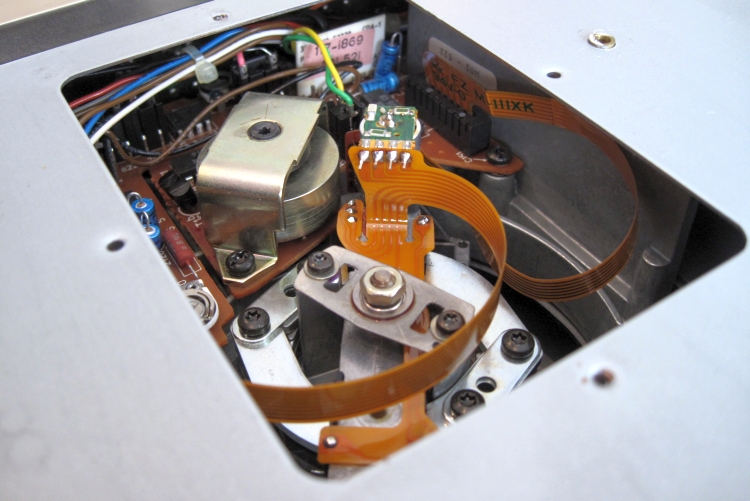
These players with their massive cast-iron swing-arm glass-lense mechanisms still produce excellent sound and are virtually indestructible
Here are some inside pics from a few Philips and Marantz players that I still have or have owned. There’s also an extensive review in which all these players are compared to each other.
Below you’ll find the following players:
Philips CD104
Philips CD304MKII
Philips CD880
Philips CD960
Philips CD951
Philips CD614
Marantz CD74
Marantz CD84
Marantz CD85
Marantz CD94
Marantz CD80
Marantz CD12LE
Marantz CD11LE
Philips CD104
CDM-1 transport, TDA 1540 DAC
Classic Philips and Marantz CD players compared
Philips timeline
The almost Complete CDM range of CD Mechanisms
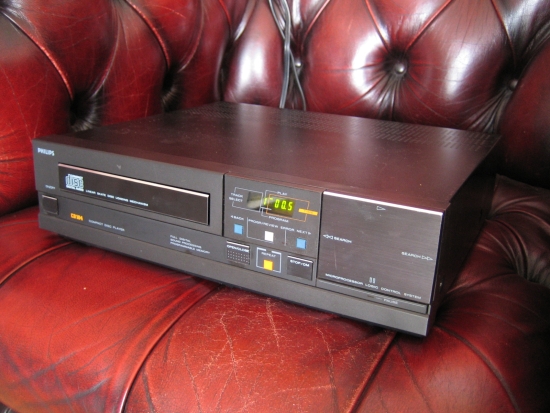
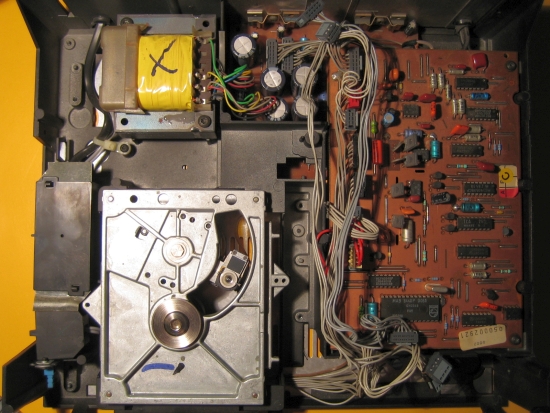
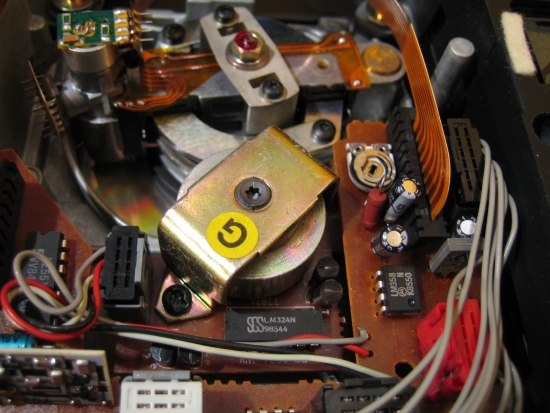
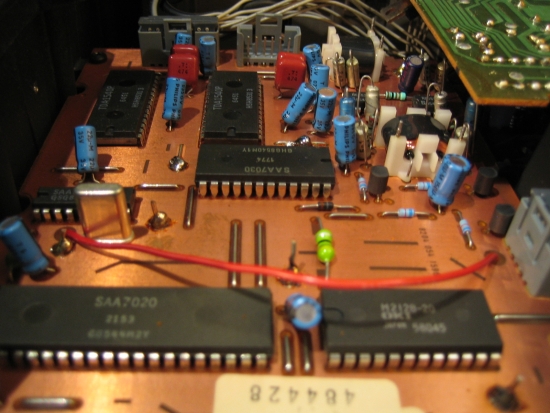
Philips CD304MKII
CDM-1 transport, TDA1540 DAC
Classic Philips and Marantz CD players compared
Philips timeline
The almost Complete CDM range of CD Mechanisms
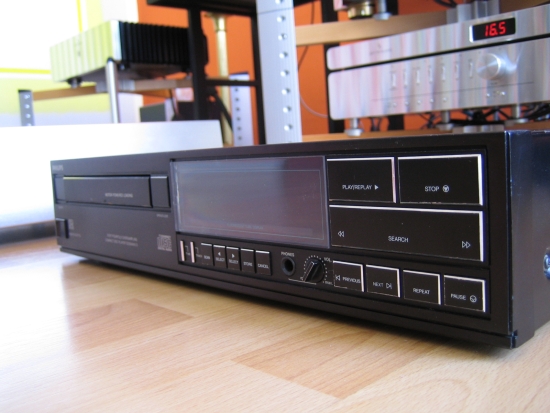
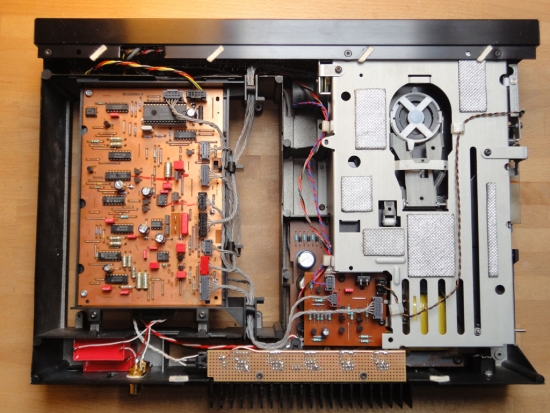
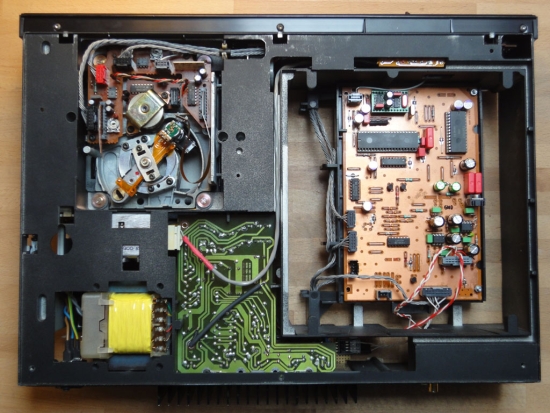
Philips CD880
CDM-1 MK2 transport, TDA1541A s1 DAC
Classic Philips and Marantz CD players compared
Philips timeline
The almost Complete CDM range of CD Mechanisms
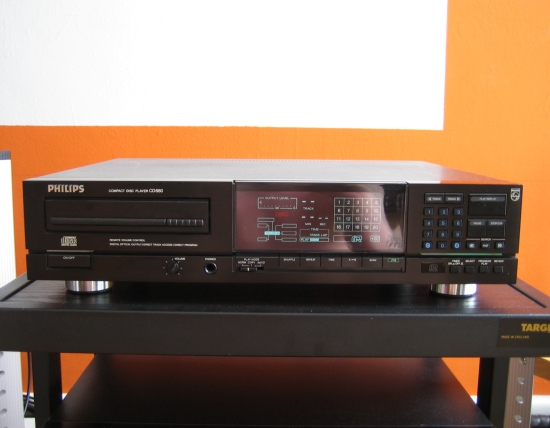
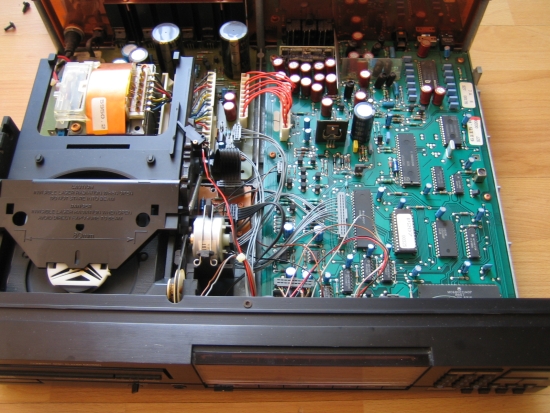
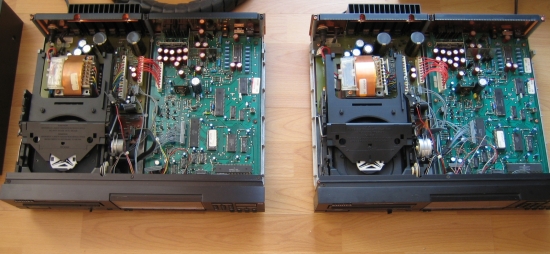
CD880 Europe and CD880 US version: identical except for the power transformer windings.
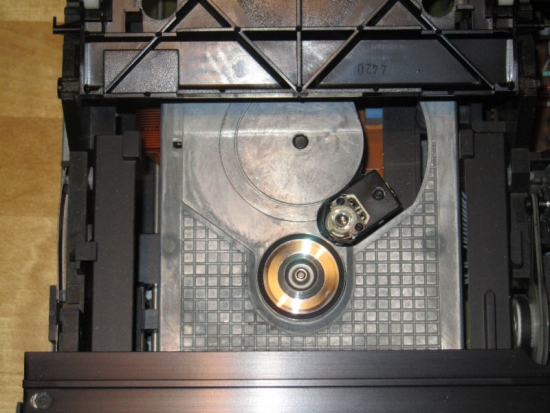
Philips CD960
CDM-1 transport, TDA 1541 DAC
Classic Philips and Marantz CD players compared
Philips timeline
The almost Complete CDM range of CD Mechanisms
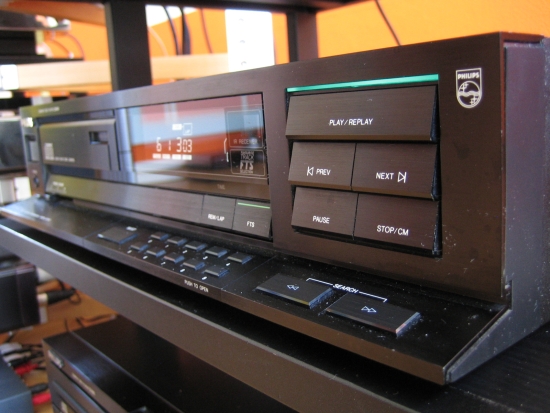
The CD960 really is just a Marantz CD94 in disguise. In my tests it sound very similar indeed, which is VERY GOOD!
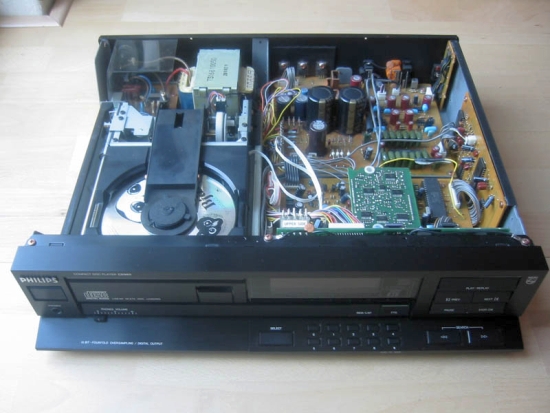
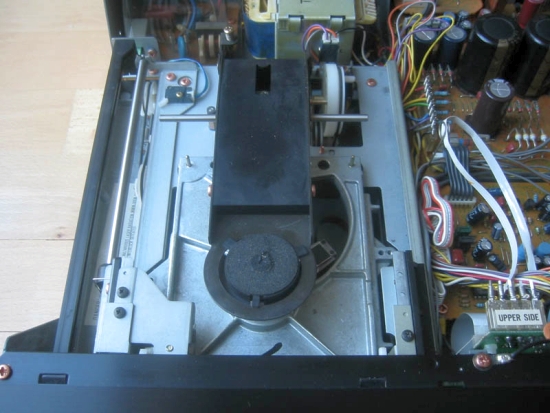
Philips CD951
CDM-9/65 transport, TDA 1547 DAC
Classic Philips and Marantz CD players compared
Philips timeline
The almost Complete CDM range of CD Mechanisms
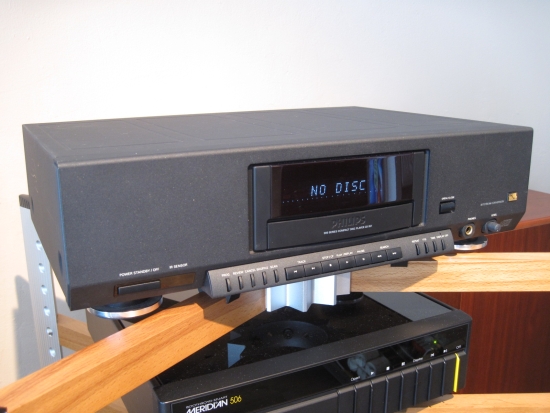
Solid, confident, rhythmic, with fast and articulate bass, while retaining fluidity and airyness: it may not be the smoothest or creamiest or richest sounding Philips player but it is still an entertaining listen.
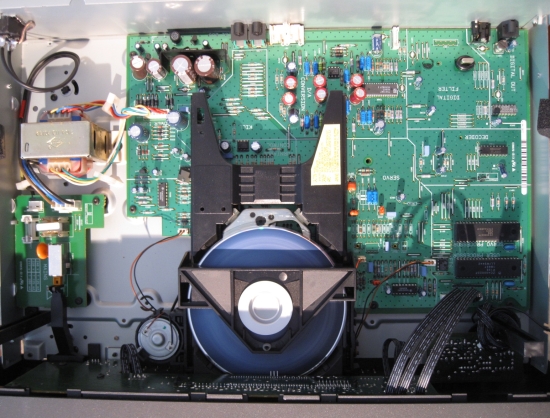
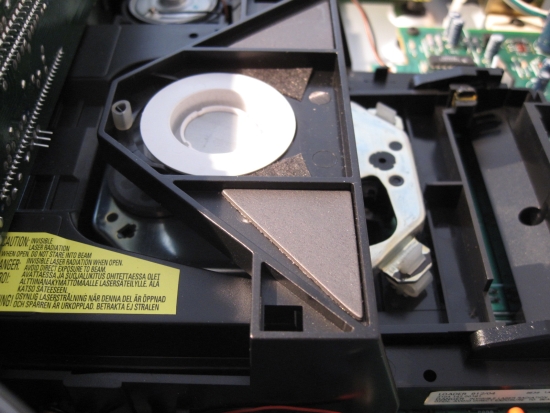
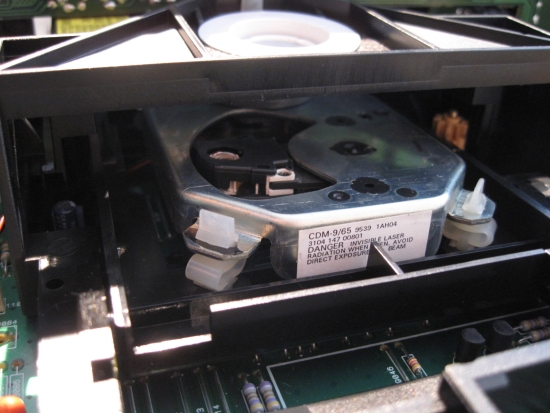
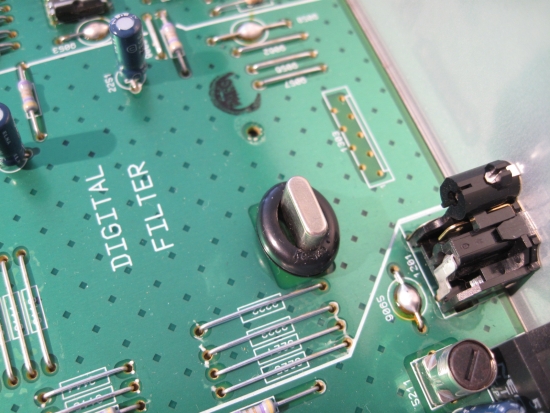
Philips CD614
CDM-4/19 transport, TDA 1543 DAC
Classic Philips and Marantz CD players compared
Philips timeline
The almost Complete CDM range of CD Mechanisms
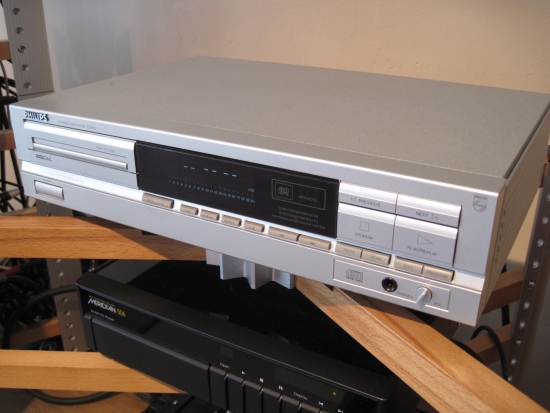
Despite being made seemingly entirely out of plastic, this is a non-synthetic sounding, highly entertaining player: open, fresh, fluid, smooth, refined and above all: musical! In stock form it is a bit lightweight in the bass and lacks solidity but even then it still sounds very, very nice. It is just very unfatiquing without tipping over into super-creamyness. It is a good balance between the classic and modern sound. With damping pads applied, IEC inlet installed and headphones disconnected it sounds much more solid and colourful and really becomes THE cheap player to have.
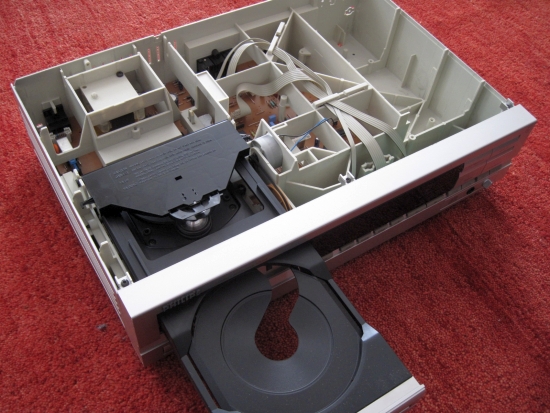
The CD614 in standard guise: lots of empty, undamped plastic. It is almost 100% plastic but due to the diagonal side walls, it doesn’t bend. Still, it can do with a fuller bas and a more solid sound. To be honest, I wouldn’t have thought this player was so special, let alone of modding it myself, if my friend Wouter didn’t visit with his modded CD614. We did an AB comparison which made my player sound thin and gray in comparison. Sure mine was fluid and airy and refined, but it was nowhere near as full-blooded as the modded CD614. So, off came the hoods to reveal what had been done.
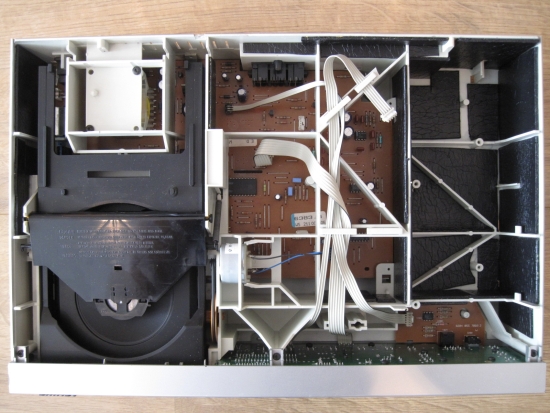
The CD614 with damping applied. This is not a universal solution (you can easily overdo it depending on the player) but the 614 really benefits from this. On the underside is a metal flap spanning a large area of the player, revealing the underside of the circuitboard. In standard form, this flap rattles. Not so anymore after applying damping material. The bottom picture is of the hood, also covered with damping material. The places left clean are where the transport clamping mechanism rests when the drawer is open. The tolerances are that narrow.
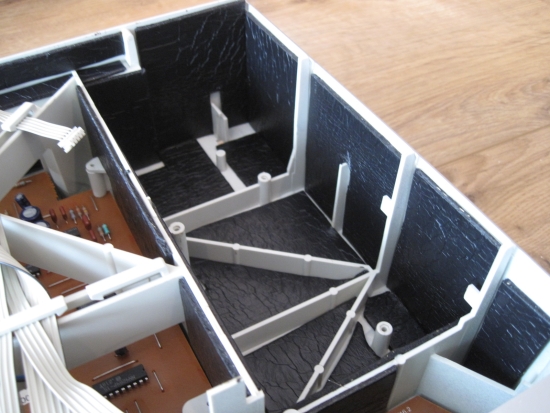
Even when only applying the damped hood to my otherwise undamped player, already it sounded fuller and more solid. This gave me the courage to go all the way. With these damping pads applied everywhere, the player sounds much more solid, with a fuller bass and a calmer, richer midrange.
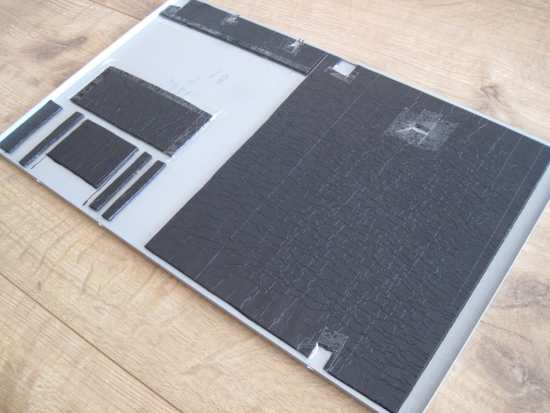
But there’s more you can do to make the CD614 sound better. It’s an old trick to disconnect the headphones, supposedly because this circuit puts extra strain on the already weak output stage. I’ve never put much thought into it but this time I just did the test. Sure enough: disconnect the headphone section and the bass articulates better, sounds faster and the midrange opens up and the whole becomes more rhythmic. Reconnect it and the sound mellows out but not in a good way.
Lastly, or actually this should be done first, is the installation of an IEC inlet. This not only allows the use of big fat cables, but also bypasses the otherwise very thin conductors inside the Philips-8-style connector. With the CD614 this is easy due to the plastic outer wall. Just desolder the 8-connector and drill the outlines of the new to be attached IEC inlet into the chassis. Then gently connect all holes. Then use a sharp knife to smooth the ragged edges. Don’t worry too much about it, after installing the inlet, all will seem perfect.
After the mods had been carried out to my player, we did another comparison and sure enough, the players now sounded much alike! Sure, the CD614 does not become Marantz CD11, but it comes way closer than they should do, especially if you consider the modest original cost of around 300 euro! The biggest difference between a modded CD614 and the reference Marantz CD11 is in the luxury department and secondly in the sense of dynamics, the latter being less obvious with the CD11. The CD11 is not really any more detailed but has more “meat on the bones”, a fuller, deeper bass, a wider soundstage with better separation and better focus. Dynamics aside, the CD11 really spoils you for other players, and that includes high end models!
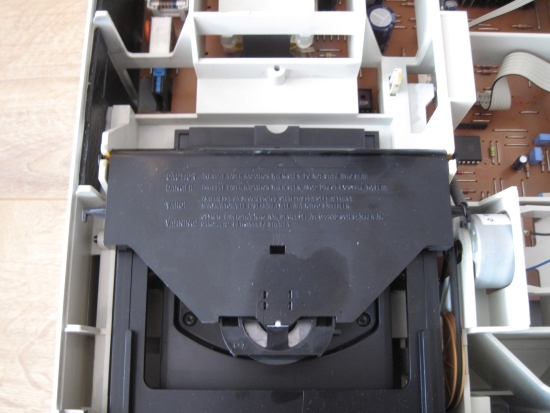
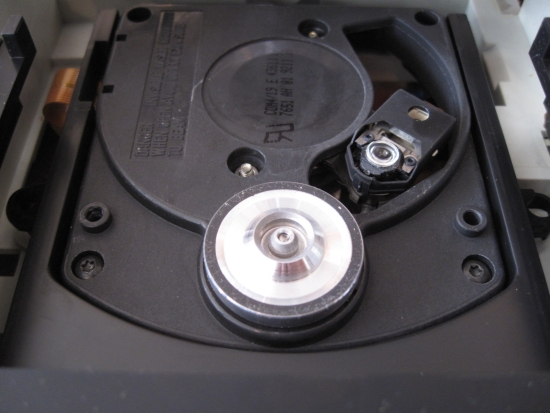
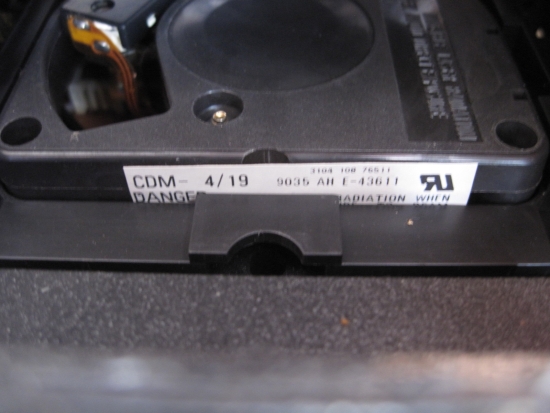
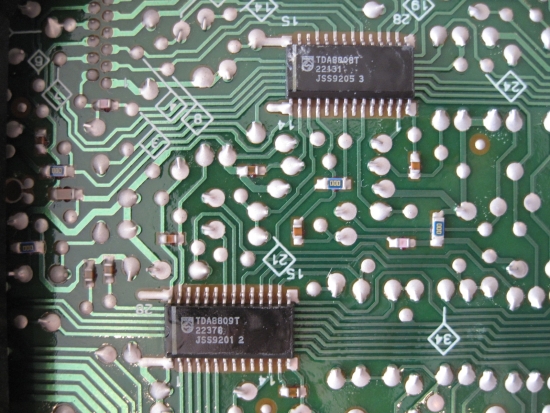
After these easy mods there is more you can do but it will involve taking the player completely apart and removing the transport and circuitboard, then replacing and adding key components such as better diodes and capacitors and such. A lot is possible here, but it is difficult to choose the perfect component from vast amount of brands and types that are available and it is easy to make mistakes. Luckily, for this my friend Wouter came to the rescue again. He has an engineer background and knows what he’s doing. Recently he came by with his re-modded CD614. It was basically the same as mine, with damping pads, headphones removed and IEC inlet. But he had also replaced various components inside, resulting in a very disappointing comparison… for me that is! Compared to his player, mine sounded once again gray and unsubstantial. What’s more: his player now had superb soundstaging, with lifelike 3D portrayal of voices in the room, beating even the Marantz CD11LE on that aspect.
Note: the older, full aluminium-cast Philips and Marantz players don’t need extra damping, they already sound luxurious and smooth. In fact, damping them would most likely shift the balance in the wrong direction. Disconnecting the headphone section however is always a good idea.
Marantz CD74
CDM-1 transport (apparently made by Marantz themselves)
2x TDA1540P DAC
Classic Philips and Marantz CD players compared
Marantz timeline
The almost Complete CDM range of CD Mechanisms
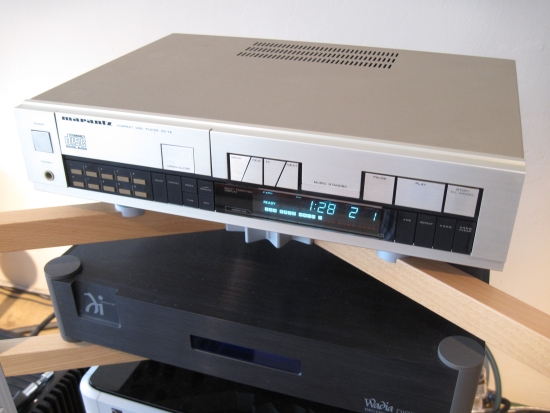
This player looks somewhat like a Philips CD304MKII internally (The CD74 uses the 14bit TDA1540 and the CD304 uses the 16bit TDA1541. The CD74 is from the same generation as the CD104/304 (MKI) but has a pressed steel chassis instead of cast zinc and in fact not a single board in common with the Philips players. It does sound a bit like it, but better. It has the same kind of solidity and drive but with a smoother presentation and a more refined treble. Inside are two transformers: a big one behind the transport and a smaller one in the front on the right, behind the front panel. Also on the outside of the rear is a big power filter.
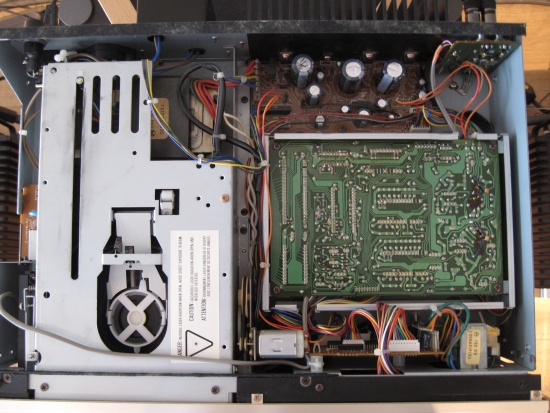

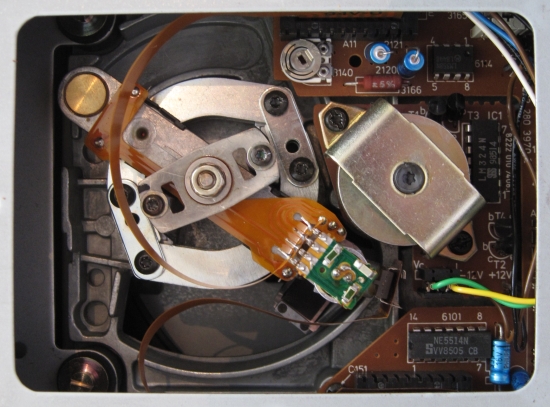
Marantz CD84
CDM-1 transport (apparently made by Marantz themselves)
2x TDA1540P DAC
Classic Philips and Marantz CD players compared
Marantz timeline
The almost Complete CDM range of CD Mechanisms
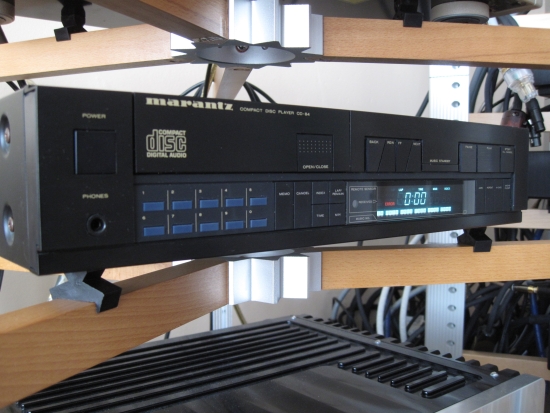
This player looks exactly like the CD74 and uses the same basic components. Only upon closer inspection small differences become clear, such as different capacitors on the DAC board, different colour wires, different colour power button bar and other plastics in different colours. But the main difference remains that the CD84 has IR remote control, which the CD74 lacks. However, all it lacks is the IR receiver itself; everything else is already in place. Its sound however is where the biggest difference is: the CD74 sounds upbeat, fast, dynamic but a bit rough and the CD84 sounds smooth, full, relaxed and a bit dull. I did some circuitboard-swapping between the two with very interesting results.
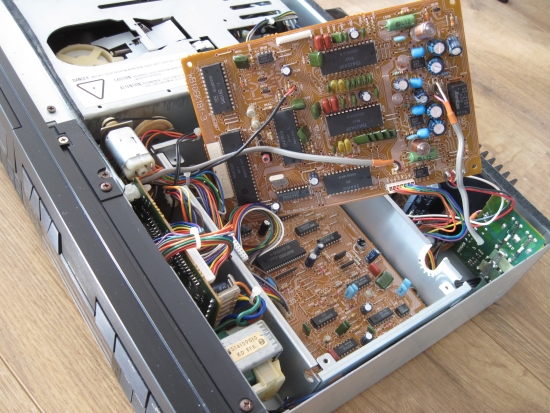
LINK TO BE ADDED —————- See this extensive comparison for a closer inspection of these two near-identical players and a report on the audible differences.
Marantz CD85
CDM-1 mkII transport, TDA1541A S1 DAC
Classic Philips and Marantz CD players compared
Marantz timeline
The almost Complete CDM range of CD Mechanisms
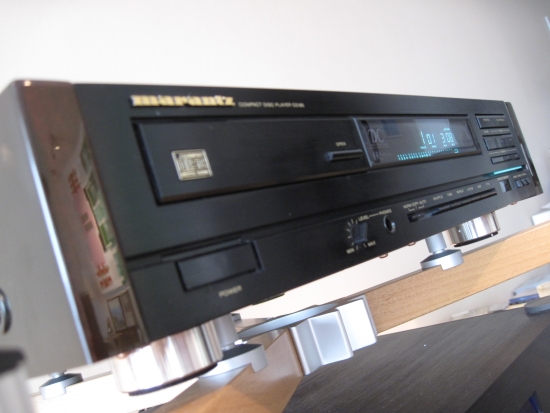
Great as a transport, perhaps just as good as the CD94(MKII), but used integrally I found the CD85 to be a little disappointing. You could think that it is a CD94-lite, but I’d see it more as an alternative to the Philips CD880, and even then, not as good.
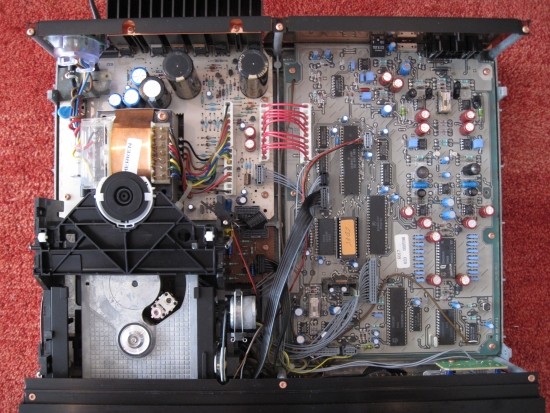
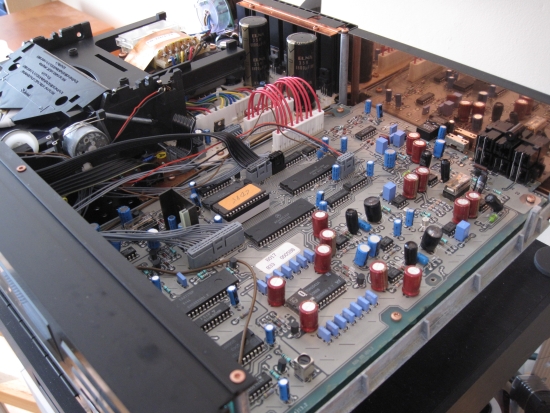
Marantz CD94
CDM-1 transport, 1x TDA 1541 DAC
Classic Philips and Marantz CD players compared
Marantz timeline
The almost Complete CDM range of CD Mechanisms
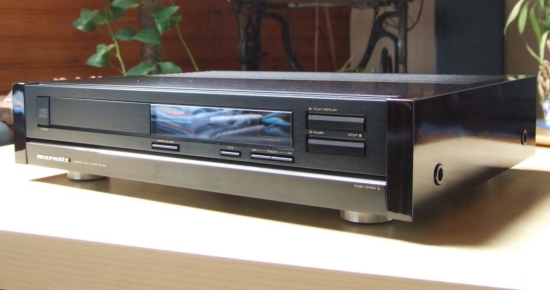
What’s there to say about the CD94 that has not already been said a thousand times? Let’s suffice with stating that I like its sound A LOT.
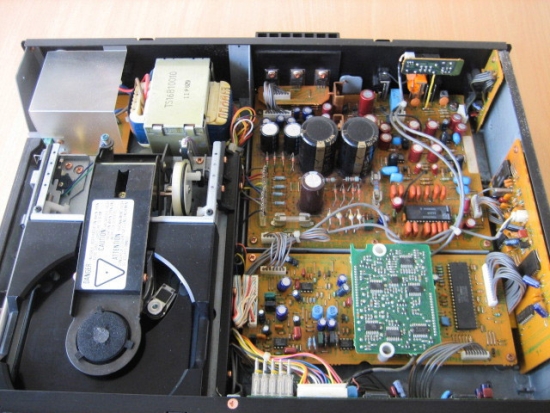
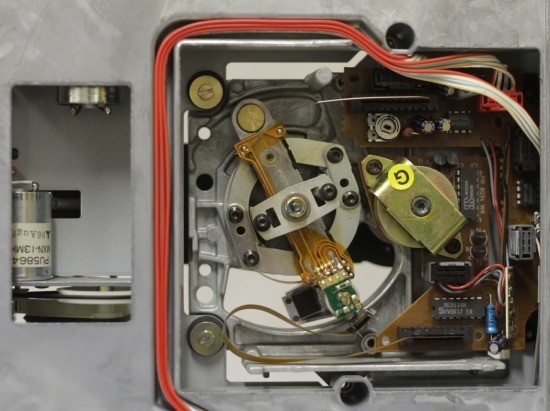
Marantz CD94MKII
CDM-1 specially selected transport (better tolerances?)
2x TDA 1541 S1 DAC
Extensive Review
Classic Philips and Marantz CD players compared
Marantz timeline
The almost Complete CDM range of CD Mechanisms
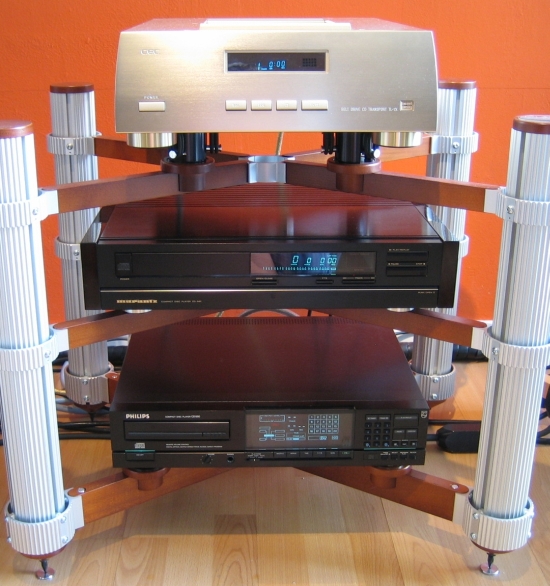
Marantz CD94 above Philips CD880. The CD94MKII has very similar looks, although early models had a big, ugly badge on the drawer. Amazingly, the CD94MKII performs equally well as a transport as the pricey CEC TL1x in my tests. This particular sample was used very little and this showed in its upbeat sound. Whether it was its low use that was an advantage, or the double lower tolerance DAC chips, the CD94MKII sounded more upbeat and rhythmic in my system either as a transport or as integrated player, than the CD94. I tend to think that the latter’s transport had just gone off spec slightly. After all, we’re talking players of old age and it’s amazing that they work at all, at age 30 and beyond.
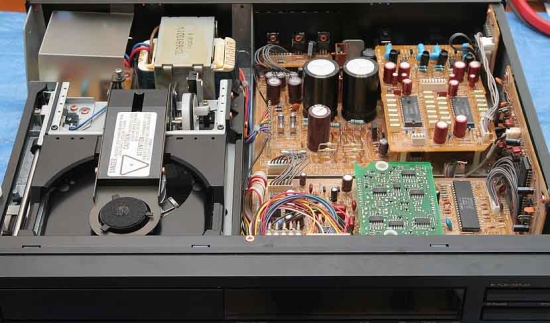
Notice the extra circuitboard holding the two DAC chips? That’s the only difference between the MKI and MKII.
Marantz CD80
CDM-1 MK2 transport, 2x TDA 1541 S1 DAC
Classic Philips and Marantz CD players compared
Marantz timeline
The almost Complete CDM range of CD Mechanisms
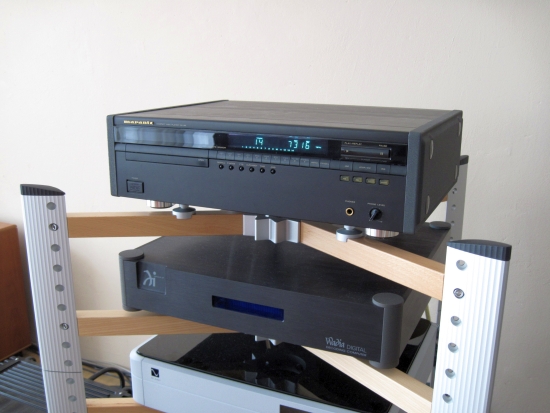
Very unique looking machine but soundwise no match for its older brother the CD94. Although the CD80 is also a smooth sounding player, its timbre is notable less natural (more synthetic), its bass is thinner and overall (for good or for bad) this seems to be a more modern presentation.
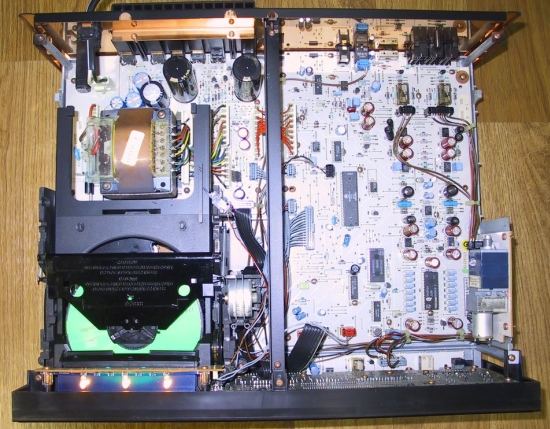
Chaotic build seems to indicate that costs were cut building the CD80, compared to the all-out CD94.
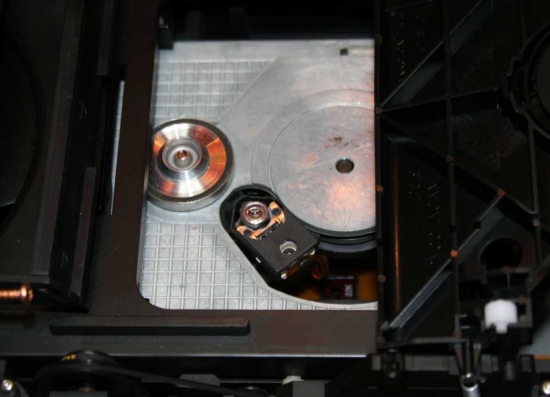
Marantz CD12LE
CDM-1 transport, TDA 1541 S1 DAC
Classic Philips and Marantz CD players compared
Marantz timeline
The almost Complete CDM range of CD Mechanisms
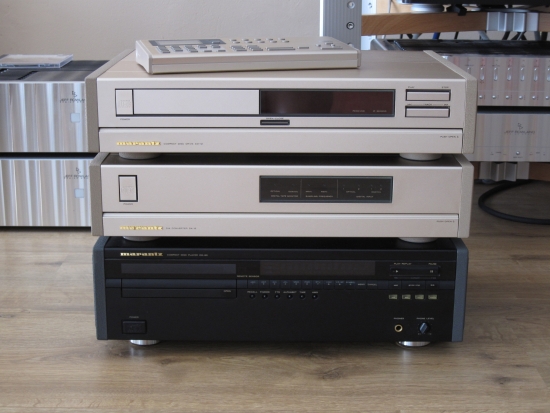
Commonly referred to as the CD12, the player is actually a combination of the CD12 transport and DA12 DAC. The combination sounds exceedingly smooth and full-bodied with creamy-rich timbre. My sample sounded a little slow but that is very likely due to its transport having gone slightly off spec.
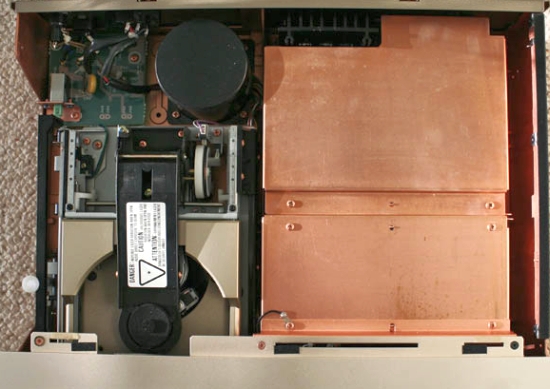
Inside the CD12 is basically a CD94, or more precise, a CD95DR, which is a CD94 without DAC electronics. The transport itself is identical.
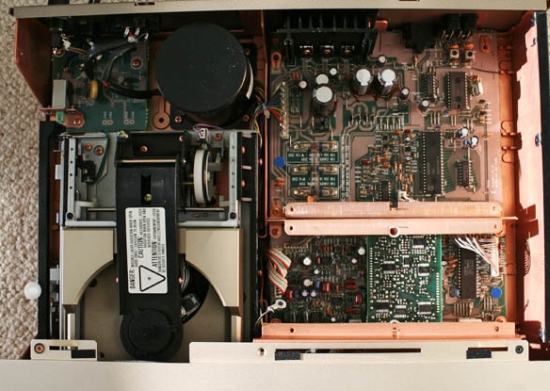
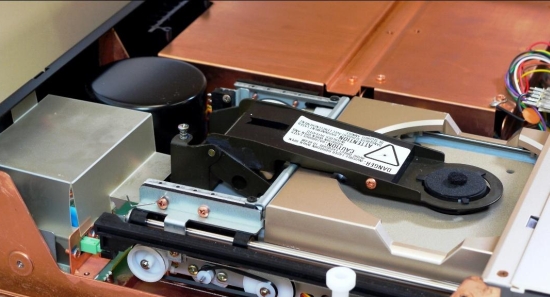
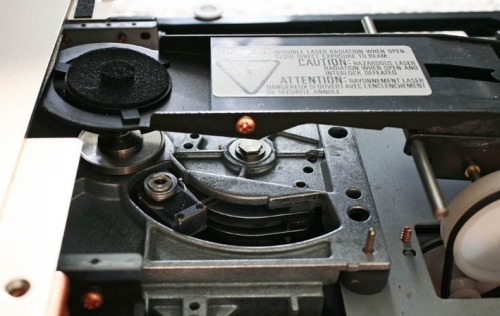
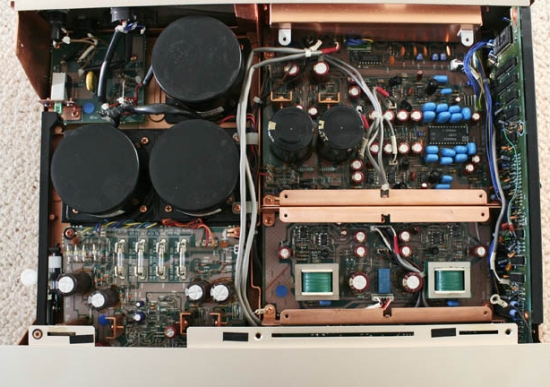
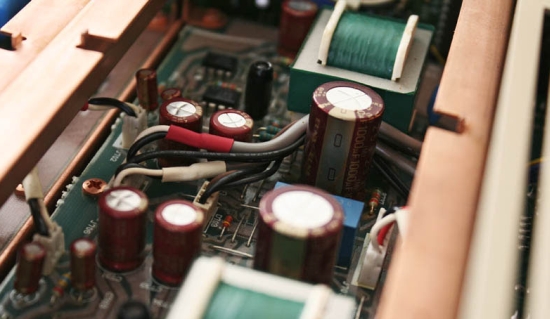
Output transformers, just like on the CD11LE
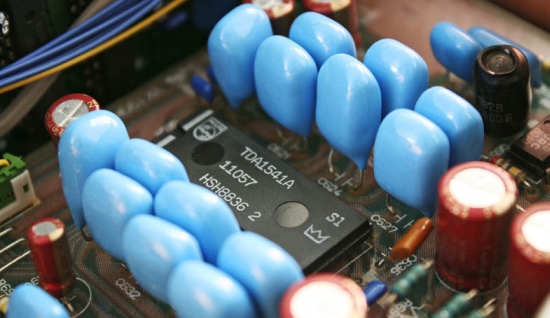
Marantz CD11LE
CDM-4MD transport, 2x TDA 1547 DAC
Classic Philips and Marantz CD players compared
Marantz timeline
The almost Complete CDM range of CD Mechanisms
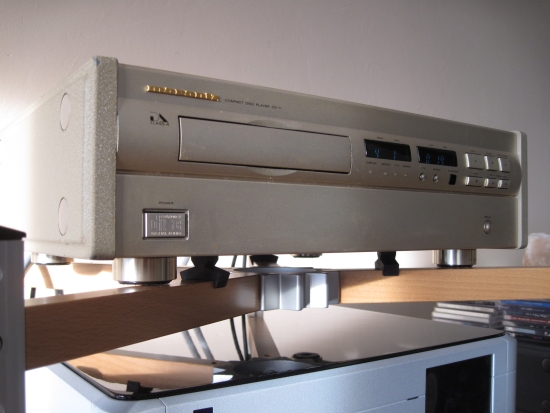
The CD11LE is a rare player with matching deviating exterior styling. I think it looks awesome. The interesting thing is that internally it is based on a chassis that seems to be extended in height. It looks like it could be a CD94 model. This chassis is obviously less tall but for the CD11 it has been extended with risers, different side cheeks and a taller front. Soundwise the CD11LE is a very fine player with silky smooth treble, excellent detailing (better than the CD94MKII), rich tonal colours (although less so than the CD94MKII) and great upbeat, fulbodied but well-differentiated bass. Being a bitstream design there is a slight sense of dynamic restraint, but it is not very obvious at all and you may well find that the CD11LE’s refinement wins from the CD94MKII’s overall bigger slam.
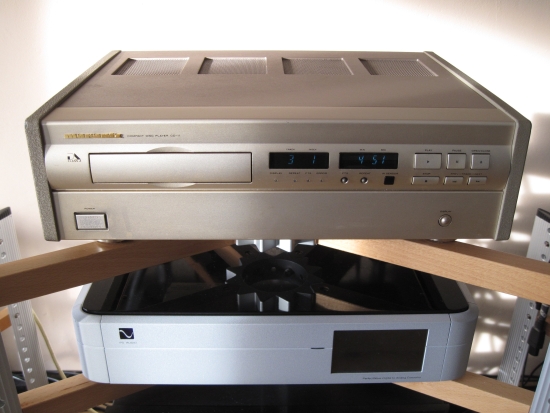
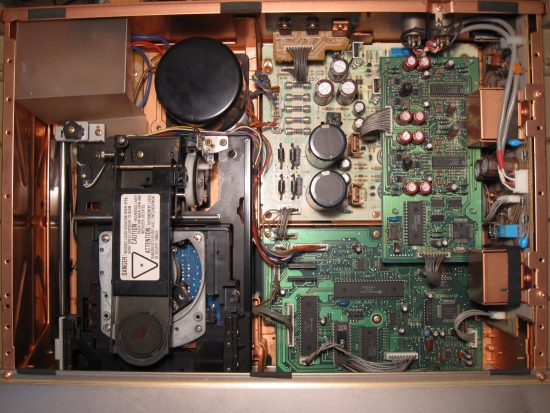
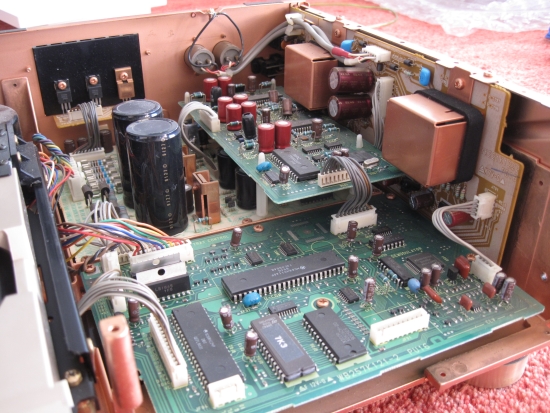
Output transformers
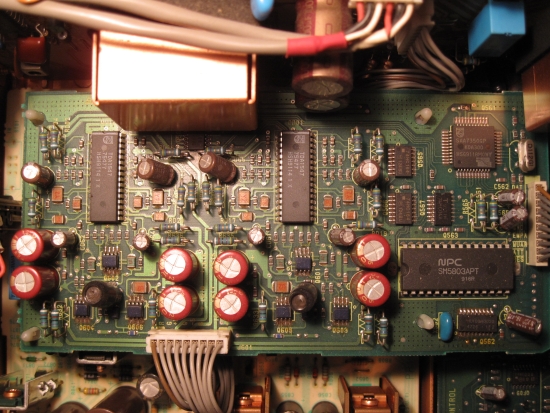
DAC board with 2x TDA1547 bitstream units
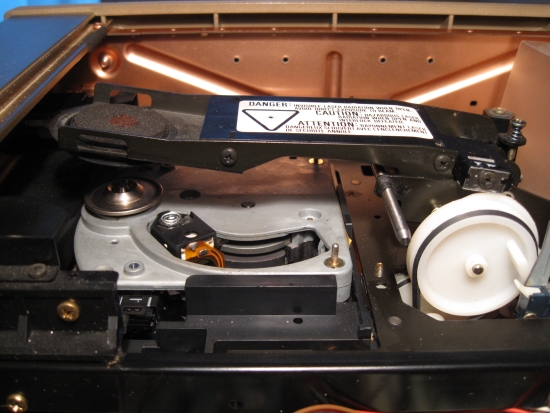
Read Also
The almost Complete CDM range of CD Mechanisms
Classic Philips and Marantz CD players compared
Marantz CD player DAC, chipset and Transport List
Philips CD player, DAC, Filter, Decoder, DOBM and Transport List
Philips timeline
Marantz timeline
CD Mechanism Masterpieces
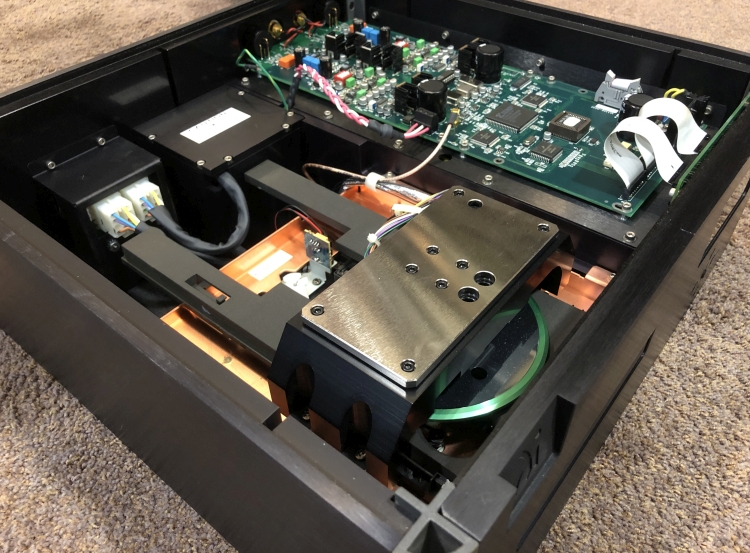
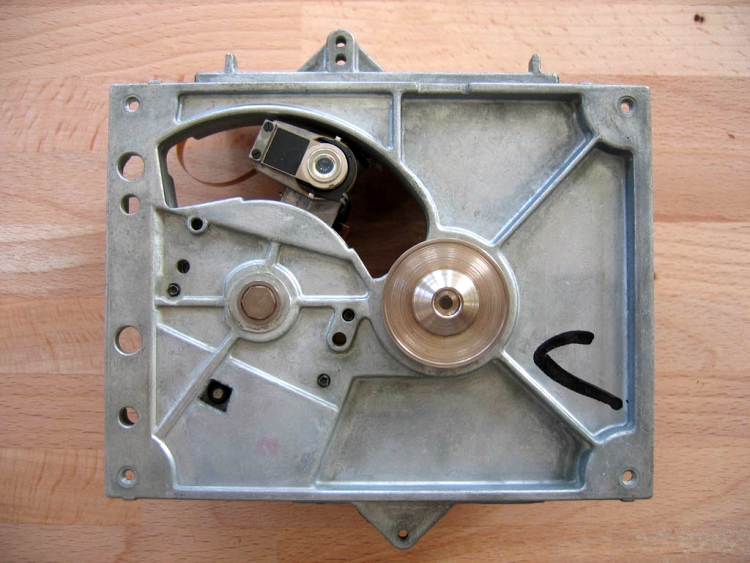
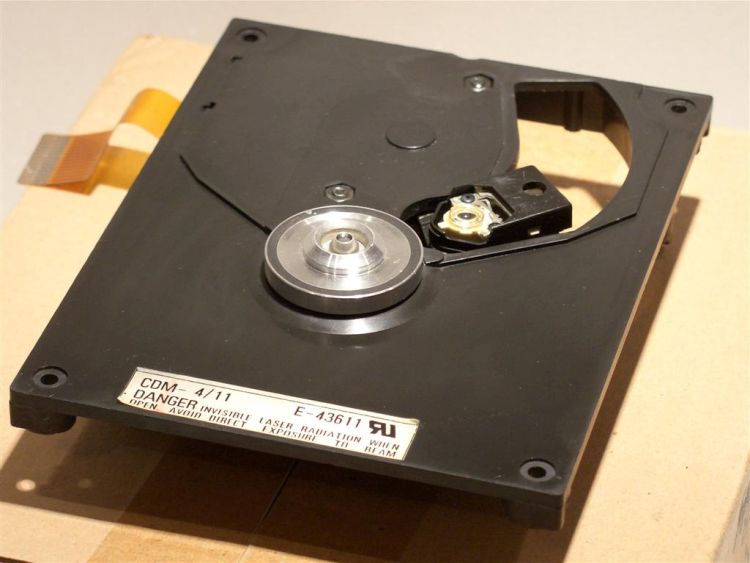
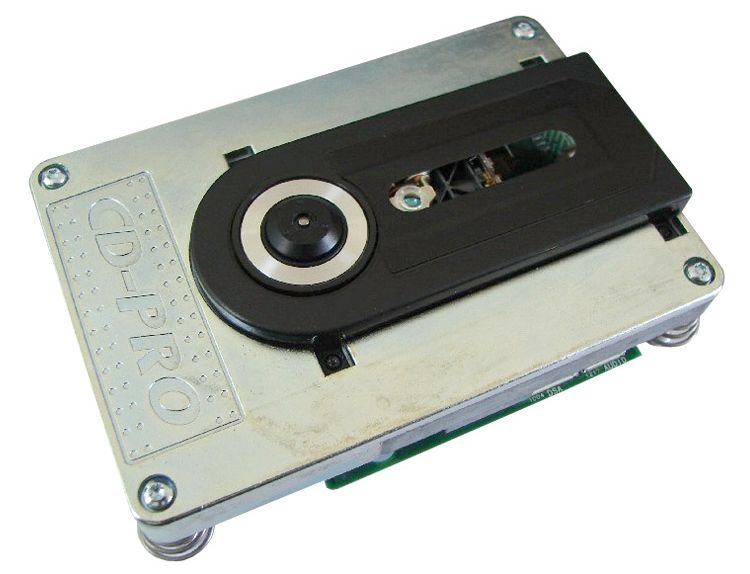
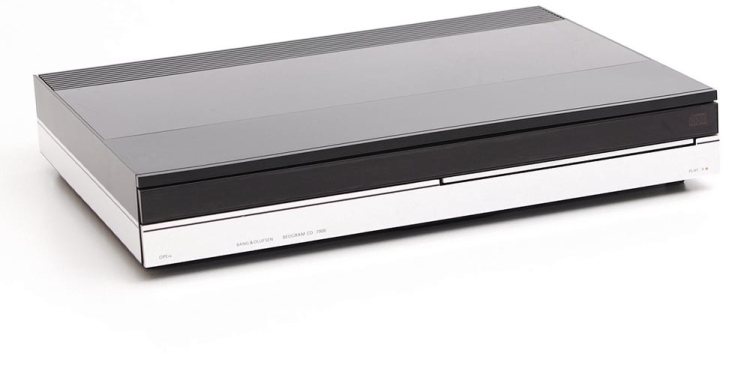
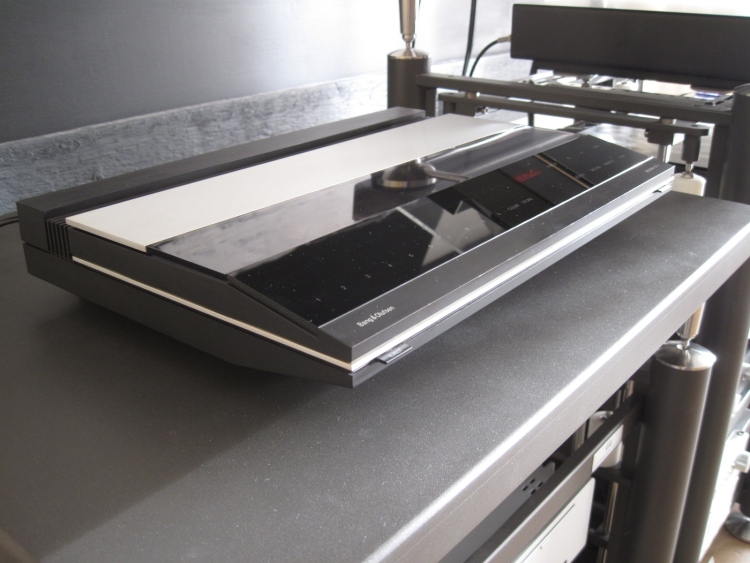
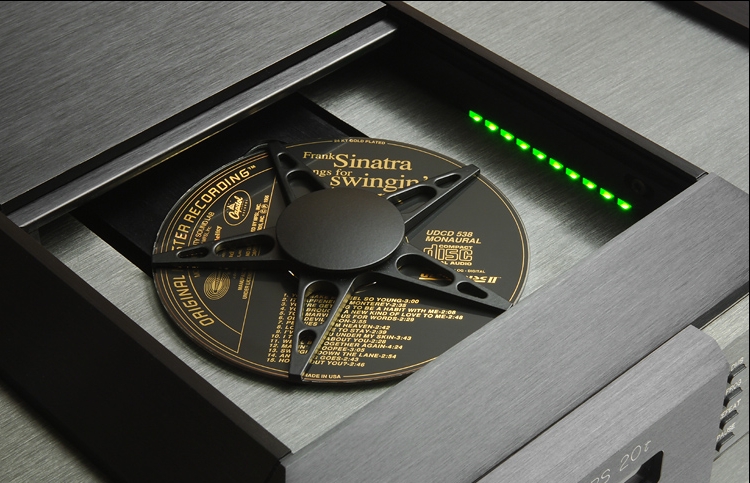
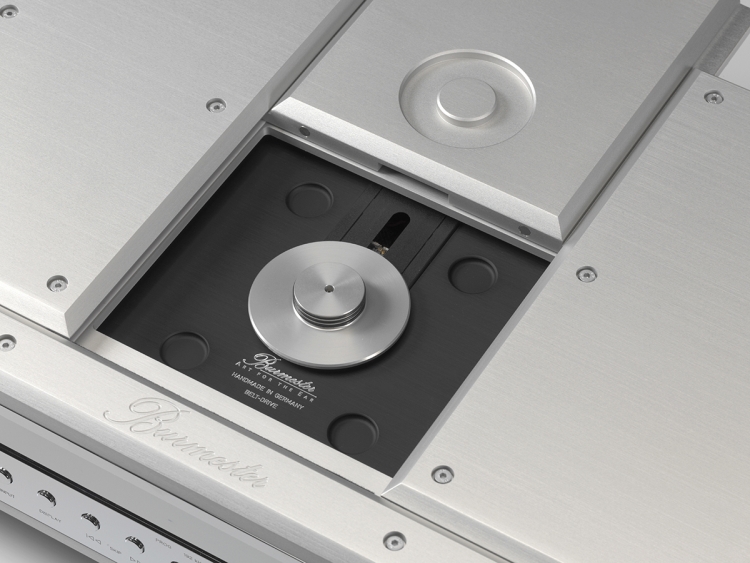
My dear CHRISTIAAN,
Since I found this amazing web site, I become a real fan!
So, many congratulations for all you write on it!
I am a simple man who loves classical music and I love Philips vintage devices, evan my bugdet is a little low.
I found that almost every DAC chip sounds diferent from another, but I’m iclined to the models Philips CD850MKII and Philips CD630 (TDA1541), or evan Philips CD692 (SAA7341GP).
Will you please be kind enought to advise me what’s the best (1 or 2 units)?
Thanks in advance!
Best Regards.
Jose Carlos Alves
Portugal
brazinha-alves@live.com.pt
Many thanks for the compliments Jose! Indeed DAC chips do tend to have their own characteristic sound, but it also depends on how they are implemented, and of course a lot depends on the rest of the player/DAC, especially the power supply and output stage. The thing with classic CD players is that I have often found that 2 samples of the same type do not sound identical. For example one CD94 can sound slow and relaxed while another CD94 can sound upbeat and fast. This makes it hard to pronounce hard favourites, but here goes: best classic Philips for me is the CD960 which is the same as the Marantz CD94. MKI or MKII is a relative matter. The latter sounded better in my tests, but was also like new and used very little. CDM1 is longest lasting, but also older than CDM4 or what they refer to as CDM1MKII, so the latter might be in better shape due to age. Also liked a lot is the CD11LE, which sounds very different, but very nice too. In the very affordable category I most like the CD614.This player is also very consistent in sound from sample to sample. Together with a friend we have at least 10 of these and they’re all fine. Only thing you usually need to replace is the drawer wheel, which is still available on Ebay. CD630 I don’t think I have heard, but it may be comparable in sound to the CD614, even though the latter uses a different version DAC, but still multibit. CD692 is also nice but very different, with a bitstream DAC, sounding more upbeat than typical classic Philips players. The difference I think may also be in the linear CD12 mech used whereas most players reviewed on this site use the swing arm mechs. Anyway, most come for very little money so I’d say just try a few!
Hi Christiaan,
what a pleasure to read THIS!
But I’m a little confused now…
I bought a Philips CD614 as a demo unit in a big electronics market in 1991 or 1992 because I had to pay DM 229,00 (about € 120,00) only – not knowing what I was doing. Regular price was DM 299,00 that time.
Fortunately, I got a CD630 for free. A brillant player in this price segment. Something between the CD820 and CD830 because it is equipped with variable analog output but missing a toslink connector.
Btw… if it’s not too late, Jose, watch out for a CD630. Furthermore, you will find a lot of information on tuning this player using lampization or noOS modification.
The CD630 has a TDA1541A which is perfect for noOS while the CD614 has a TDA1543 DAC.
I still love the CD614 as IMO it has a very natural sound so that I can do control the tone with my Amp if I want to.
Well, the gear wheel of the 614 – I guess you know about it – was broken and I had to change it. Cover and front panel being removed I took the chance to unplug the headphone wires. I did the same with the CD630. But I couldn’t hear any difference. Are my Amps – a YAMAHA RX-V381 and a TEAC A-R500 – just too bad or what do I have to do to notice a difference? 🙂
And would you recommend to cover the bottom flap with damping material as well?
Many thanks in advance.
Best wishes
Heiko
Hi Heiko, it’s some time ago that I kept myself busy with these players and I can’t remember if I treated the bottom flap or not, or if that would be recommendable at all. In general, the 614 gained weight (literally and audibly) with every addition I made so if there’s room on the bottom flap, I’d say why not treat it as well. The gear wheels are always an issue after 20+ years but, fortunately, can still be found new on Ebay. Indeed, I did not notice a difference when disconnecting the headphones either. I just did it for good measure.
Hi Christiaan,
assembling a new gear wheel is worth the financial and time effort in any way. I paid € 10,40 for material and worked half an hour – doing this the very first time. Without any modification at all this player has a reasonable value now.
As for the CD630 I assume to hear a slightly fuller bass after unplugging the headphone unit. I don’t need the headphone connector anyway because the CD630 has no volume control for it. Besides, the CD630 has enough bass. 🙂
Currently I’m wondering if I should do noOS modification on the CD630.
Many thanks again for your essay. 🙂
Hi Christiaan,
it’s done! The CD630 is now free from oversampling.
And it’s fabulous… what a surprise. Clearer, airier, more precise, more dynamic, louder and more powerful.
A/B test with Beogram CD X and (recently purchased) YAMAHA CDX-1050… and the winner is… the PHILIPS CD630! Amazing when you keep in mind that his competetors have 1.5 and 2.5 times the weight and that I didn’t touch anything else you recommend for modification – except adaptation in power supply to 230V which lets the player run very cool.
I love TDA154x DAC! 🙂
Next candidate for non-oversampling will be the Beogram. I’m curious and will tell.
Best
Heiko
Nice work and good on you to keep investigating:-) Indeed, 1541 and 1543 remain special beasties! Those Philips players (614 as well) have a naturalness and flow that seems impossible for other (more recent) players to match. Even the bitstream 624 has a certain natural quality even if more restrained than its multibit counterparts. If the transport and the servo parts are still in good condition, I would assume that the CDX might score ahead of the 630 in some areas but probably not all. Will be interesting to hear your findings after the NOS mod. The big Yamahas of that time always excelled in bass and slam but certainly not in refinement but they sure look nice, don’t they?
Well, the YAMAHA sounds well-balanced with precise trebles and bass. But in comparison to the non-OS CD630 it lacks in spatial resolution. The non-OS Philips has produces better stereo.
With his massiveness the YAMAHA has a very impressive appearance.
Hello Christiaan,
Thank you for your website, it’s really helpful to get pictures of the work you’ve achieved on the CD614. I just bought one from its first owner in pristine condition, with remote.
I’m planning the modification you did (disconnect headphones, damping and IEC inlet).
May I ask you if I should go for a specific inlet or any type will fit?
If I wanted to go further with changing components like capacitator, is there a website where I could find step by step instructions?
Thank you for your kind help.
All the best,
Axel (Belgium)
Hi Alex, any IEC inlet will do, you don’t need a high-end one. More importantly, a full recap is highly recommended, but at the very least in the power supply section. I don’t have a step by step list, sorry. Easiest is to replace them one by one with same-value caps of your choice. You could check the Lampizator website for inspiration, although the articles on there mainly regard turning the players into transports.
Hi Christiaan,
Could you advise me someone who could perform the NOS modification to my CD614? I live in Belgium, close to the Maastricht. Is your friend located far from there?
Thank you for your help.
Cheers, Axel
Hi Alex, Sorry, can’t help with that.
I wonder if you happen to know the model of Phillips transport mechanism used in the Marantz CD48 —-?
Brian in Texas
It’s the CDM12.1. For this kind of info, see the Marantz CD player DAC chipset and transport list.
Hello Christiaan:
I owned a huge collection of Philips and Marantz components from the early 90’s. I was wondering what you think of Philips LH1000/LH1001. You spoke very highly of Marantz CD-94MK2 even though it was 3 years older than LH1000. I might want to look out for an used one if the price is right.
I was told that CDM-9 is the only one that can read CD-RW discs out of all the Philips CDM-X. I’m pretty sure CDM-1, CDM-4, and CDM-12.x cannot.
I have:
Philips LH1000/LH1001
Philips CD-951
Philips CD-950
Philips CD-940
Philips CDC-936 (two)
Philips CDC-935
Philips CDV-488 (remote very similar to LH1003 which was missing from LH1000/1001 setup)
Hi Howard, alas, I have never seen an LHH model in real life. But I suspect they don’t differ too much from the equivalent CD-XXX model. I thin you’re right about CDM1-CDM4 not having CD-RW capability. Not sure about CDM-9. AFAIK, CDM-12 does support CD-RW from a certain model. Alas, I have no CD-RW’s to check. In any case, the VAM mechanisms that succeeded the CDM12 do support CD-RW.